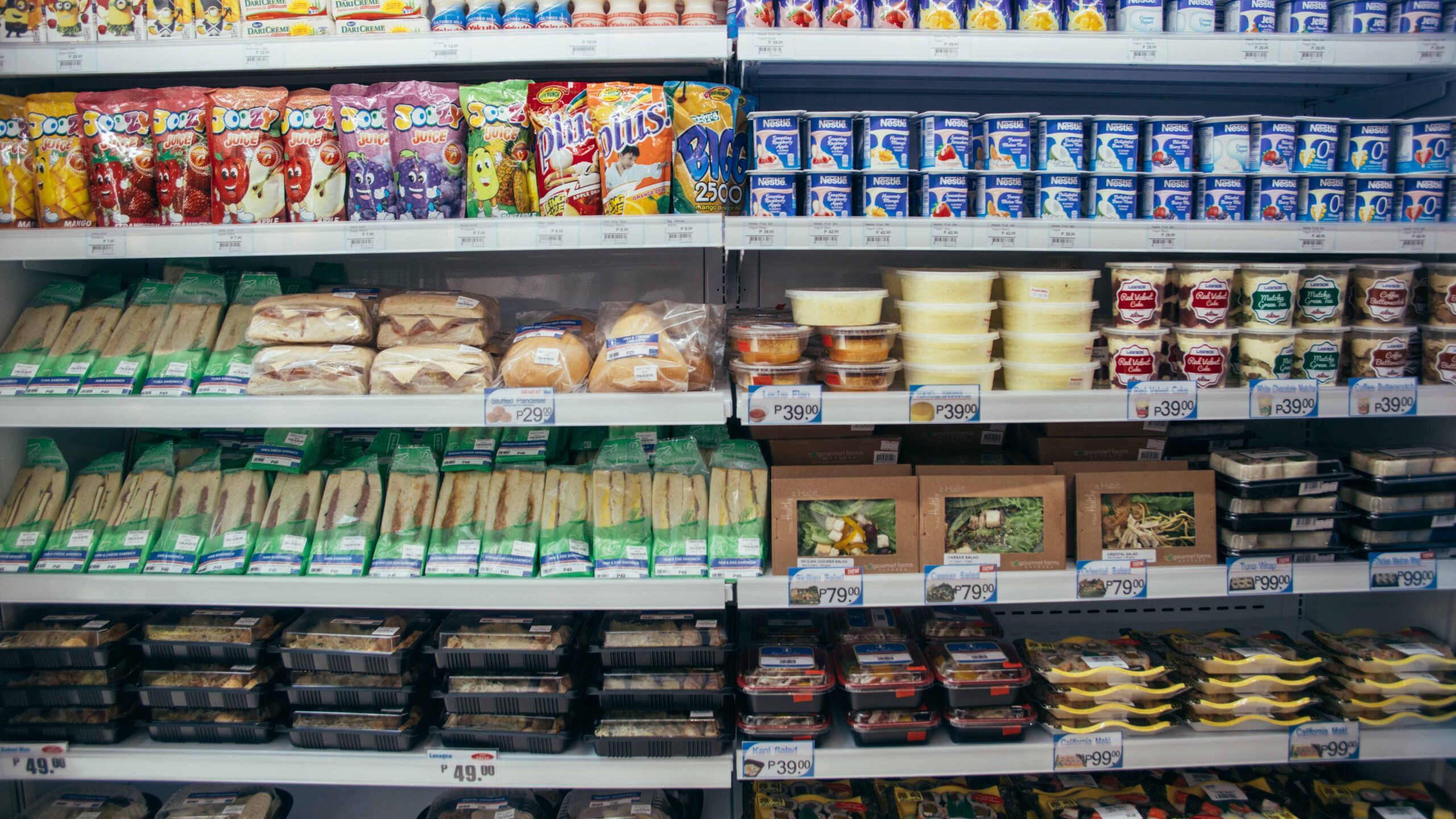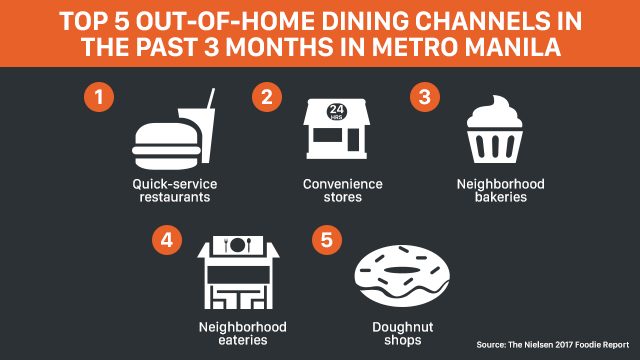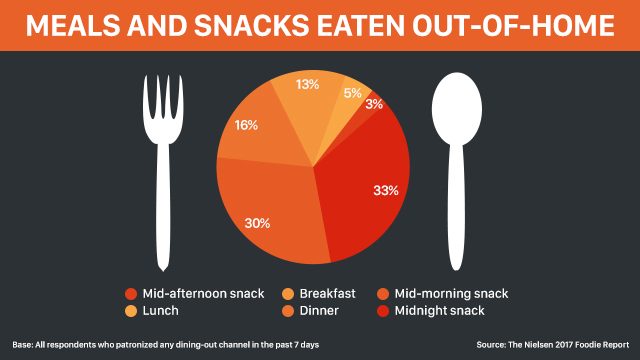SUMMARY
This is AI generated summarization, which may have errors. For context, always refer to the full article.

MANILA, Philippines – Dining out in Metro Manila is becoming a normal routine, according to a Nielsen report that showed residents of the capital region opting to eat out more than once a day.
This year’s Nielsen Foodie Report, released on Friday, August 11, was based on the results of interviews and focused group discussions held in June.
The respondents for the interviews are Metro Manila residents aged 16 to 50 from Class ABCD homes, whom Nielsen described as “purchase decision makers when it comes to out-of-home eating.”
The 3 focused group discussion sessions were held among Metro Manila residents aged 24 to 45 from Class ABC1, Class C2 socio-economic classes; and 18 to 24.
Nielsen said in a press statement that its Foodie Report polled respondents in Metro Manila “to understand consumers’ out-of-home dining behaviors and preferences.” It also examined the following:
- Self-reported frequency of dining out, including snacks, dine in, delivery, and takeout
- Preferred food establishments
- Most important selection factors when choosing where to eat or buy food
Dine-out options

Based on the report, the most common dine-out meals are lunch and afternoon snacks. The respondents said that in a month, they go to 5 or more different types of eating channels.
The most popular among diners are quick service restaurants, convenience stores, neighborhood bakeries or bakeshops, and “carinderias” or eateries. The respondents said they dined in or bought food from these places from once a week to almost daily.
“Among the commonalities of these food channels are their accessibility to the home or the work area, their offer of convenience, and value for money,” said Stuart Jamieson, managing director of Nielsen Philippines and Emerging Markets Southeast Asia Cluster leader.
“Usually, in these establishments, it is faster for consumers to eat and go or just grab and go. Consumers would also usually eat or buy meals on their way home or to work or while at work and when they do they look for places where they can get their pesos’ worth,” Jamieson added.
Impact of Metro Manila traffic on home dining
According to a focus group, the traffic situation in Metro Manila is expected to make preparing home-cooked dinner meals a challenge in the future. The Nielsen report said this can spur the growth of outlets “such as rotisserie/lechon/barbecue stalls, food carts and kiosks.”
Nielsen also said that based on the report, pricier restaurants such as casual dining or sit-down restaurants, and restaurants that offer buffets “still tend to be patronized less frequently, mostly during special occasions.”

Jamieson said as more people opt to dine out, there would be a corresponding effect on their household purchases, particularly cooking items.
“As the incidence of eating out of home increases, we could expect an effect on consumers’ household purchases especially of items used in cooking such as fresh ingredients, sauces, and condiments,” he said.
“Manufacturers can compensate for what could be lost at the household level by tapping into the growing patronage of these neighborhood food establishments. Work with these channels to come up with food, beverage, and dessert offerings for consumers,” Jamieson added.
Food information sources
Nielsen said based on the report, TV ads or promotions made on TV shows “continue to be an important source of awareness when consumers look for new places to eat.”
Other preferred food information sources are word of mouth and store displays, while social media, and online feature stories such as food blogs and food reviews “are gaining traction among the internet-savvy younger generation,” Nielsen said.
“For startup dining places with lesser budgets to invest in TV commercials or billboards, word of mouth and creating buzz online through blogs and reviews are practical alternatives because they are also potent sources of awareness and information especially among Millennials (aged 16-35 years old). In fact, four in 10 respondents belonging to the age group claimed the highest reliance on online food blogs compared to the more mature respondents,” Jamieson said. – Rappler.com
Add a comment
How does this make you feel?
There are no comments yet. Add your comment to start the conversation.